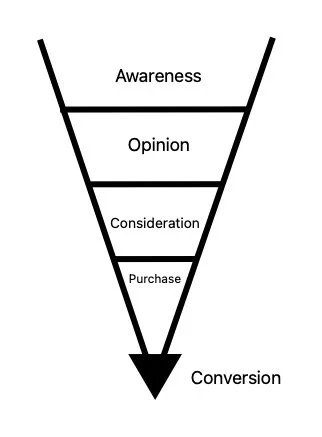So what do you actually do?
The holidays are fast approaching, and with them come the annual conversations with well-meaning relatives and friends asking about your job. If your family is like mine, most are satisfied with a one- or two-word answer—marketing, sales, product design, customer service. But every so often comes the earnest follow-up: What is marketing (or sales, or product design, or customer service)? Suddenly you have 30 seconds to explain your company’s customer journey—and your role in it—well enough to keep the conversation going.
This isn’t just a “once a year” problem. It happens at work all the time. If you’ve spent the first five minutes of a meeting trying to figure out what the other person is talking about, you’ve felt it. Everyone brings their own perspectives, priorities, and problems. Establishing shared context quickly is critical to getting good outcomes.
Next time—whether it’s a cousin or a coworker—try this: grab a pen and paper (a napkin works) and draw this simple Customer Lifecycle Funnel.
What’s the Customer Lifecycle Funnel?
It’s a mash-up of the traditional customer-acquisition funnel and customer-lifecycle diagrams…
…that intersect at a conversion event.
Every customer engagement sits somewhere on this lifecycle funnel. Each section comes with its own customer needs—and corresponding strategies, tactics, and teams dedicated to meeting them.
Once you’ve drawn the diagram, use it to describe your customer’s high-level journey, identify the part you support, and explain the work you do to meet company and customer needs.
With that context in place, the real conversation can begin.
Why use the Customer Lifecycle Funnel right away?
It’s easy to grasp. A simple, logical series of engagements we’ve all experienced.
It’s universal. It applies to any organization, regardless of purpose, maturity, or size.
It covers all transactions. “Conversion” can mean a purchase, registration, conversation, behavior—anything.
It makes room for overlap. Retention, cross-sell, and advocacy can coexist across stages.
It helps others place themselves. People can locate where they support the journey and better see the commonalities, differences, and dependencies between your roles.
Referencing the Customer Lifecycle Funnel regularly also pays off for the company:
Higher efficiency and effectiveness from better cross-team coordination.
Empowered teams that can make local improvements with a clearer view of their impact.
Shared, cost-effective solutions (audience, content, and medium management; reporting and analytics; data governance) are easier to spot, define, and implement.
AI-readiness improves because you’re aligning on standard, governed context terms—crucial for integration and automation. It’s much easier to agree on the right terms when everyone starts from the same conceptual model.
So next time you’re chatting with a colleague from another department—or an inquisitive relative at Thanksgiving—start by drawing this simple shape.
Just don’t use the nice linens.






